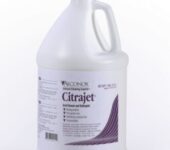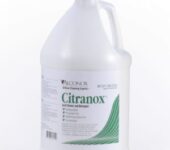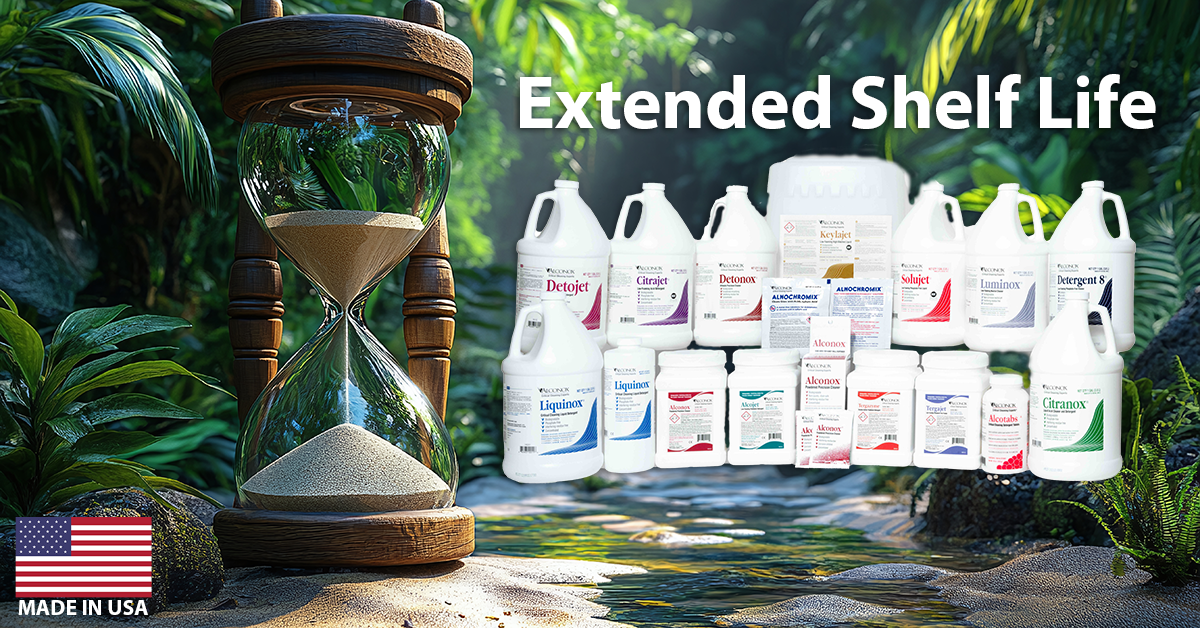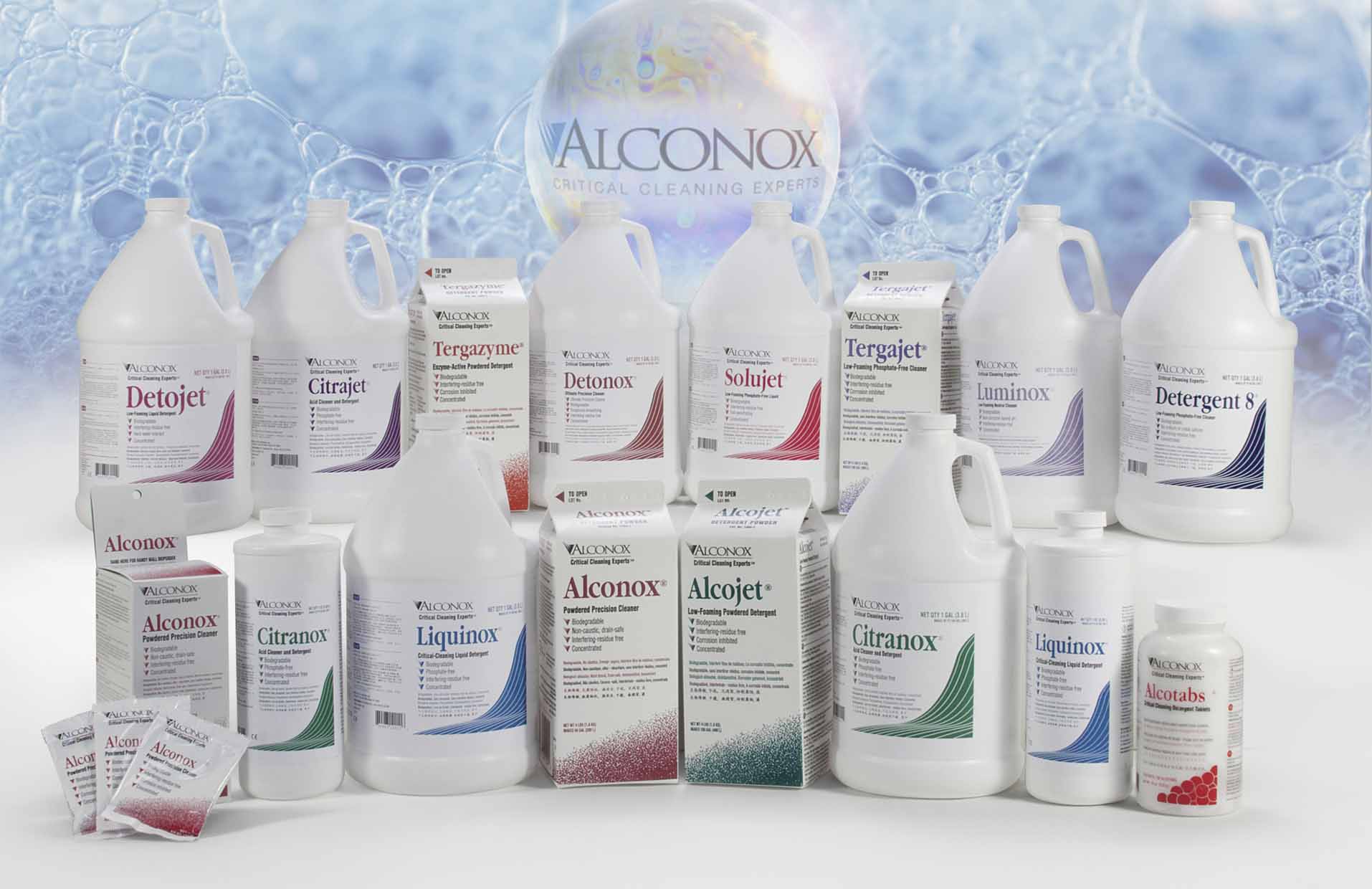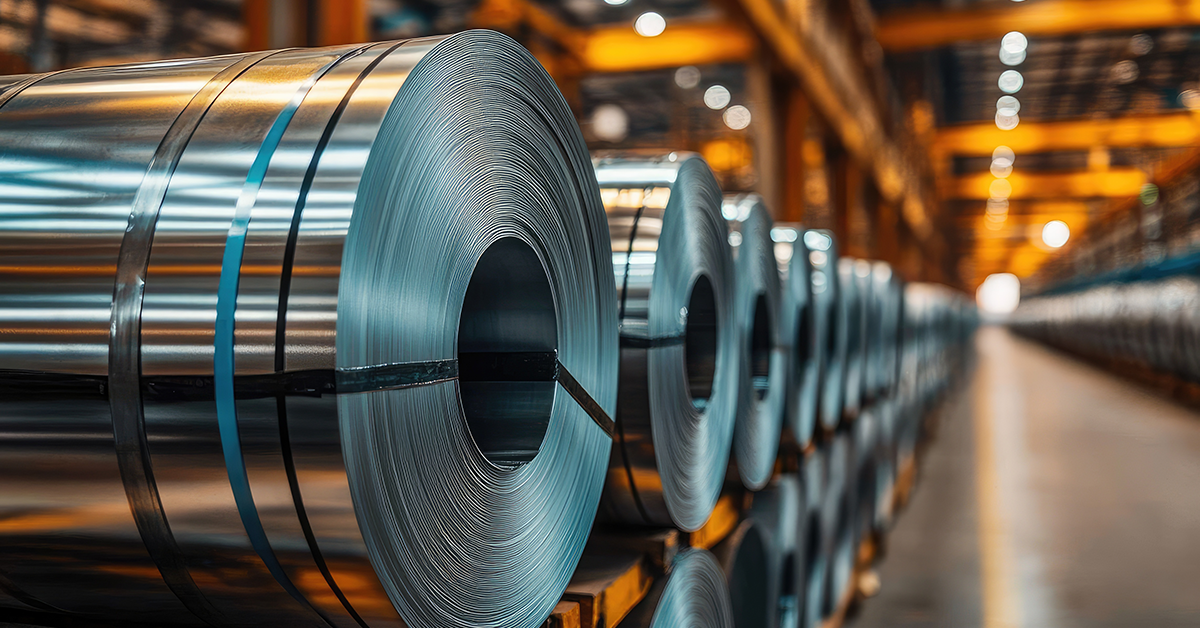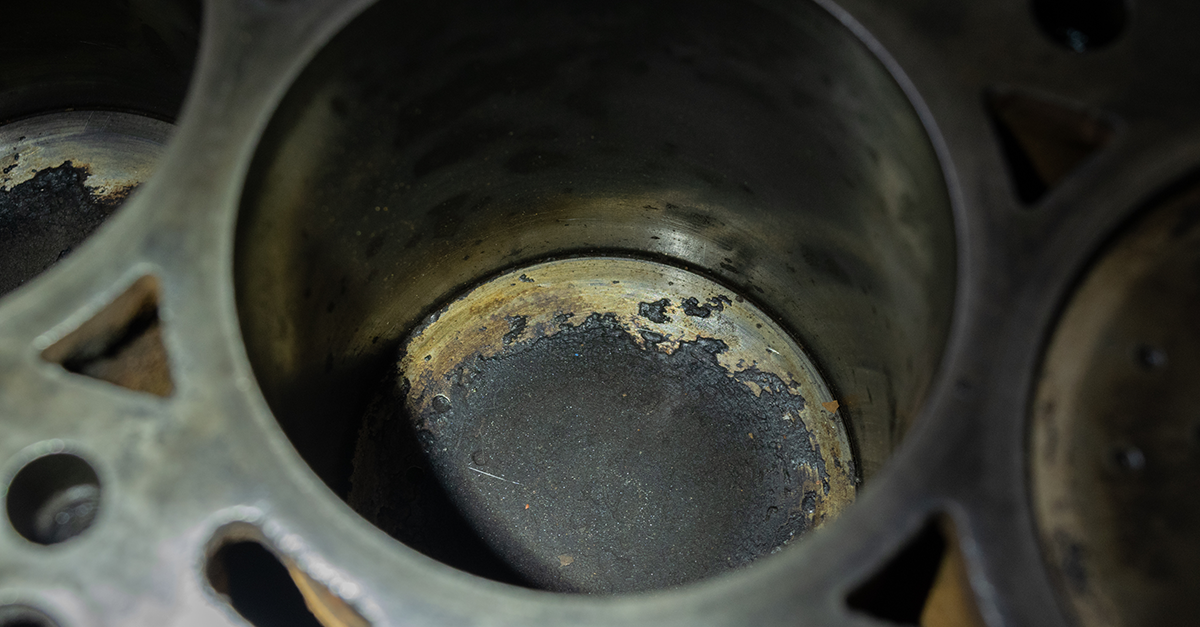
Q: We typically clean our carbon steel with Citrajet detergent but following an unintentional overnight soak, we found a dark layer of black soot. What might this be and how should we clean it?
A: All steels that aren’t stainless will eventually get attacked by acidic solutions over time, so what you are seeing there is the action of the acids in Citrajet® Low-Foam Liquid Acid Cleaner/Rinse (and would be the same case with its foaming sibling Citranox® Liquid Acid Cleaner and Detergent) on the carbon steel that you are using.
Most likely the dark / black layer that you are seeing on the surface is a combination of Iron(II) and Iron(III) citrate, with the first one being a dark green and the latter one being an orange color, which in combination will look kind of dark brown or black.
We generally would recommend refraining from leaving carbon steels in a Citrajet or Citranox solution for an extended amount of time as the acidic nature of the solution will corrode the steel to some degree. This isn’t something that would occur during standard cleaning durations (tens of minutes range, perhaps an hour), however, we again would avoid this for extended periods of time.
These detergents will both excel at removing other inorganics and oxidation you will find on carbon steel.
Soot can also be a residue for other reasons as well, and can be similarly addressed regardless of the root creation.
Why Cleaning Carbon Steel Soot Matters
Carbon steel soot refers to the black, powdery or flaky deposit of carbon particles that accumulates on surfaces as a result of combustion processes or high-temperature exposure involving carbon steel. This type of soot is typically encountered in industrial/precision manufacturing settings, on cooking equipment, or in scenarios where carbon steel items are exposed to open flames or significant heat.
Characteristics of Carbon Steel Soot
- Composition: Predominantly composed of carbon, carbon steel soot may also contain various other byproducts depending on how its formed, including iron
- Appearance: It generally appears as a dark, sometimes oily or sticky residue that clings to surfaces, making them look dirty or discolored.
- Adherence: Soot particles are fine and can adhere strongly to surfaces, making them challenging to clean.
Formation of Soot on Carbon Steel
The formation of soot on carbon steel typically occurs in environments where the steel is subjected to high temperatures that induce the incomplete combustion of organic materials (like oils or greases used in cooking or industrial processes). This incomplete combustion produces excess carbon, which settles on the steel as soot. It can also come from other chemical reaction as discussed above.
Implications of Carbon Steel Soot
- Corrosion: Soot can accelerate the corrosion process on carbon steel by trapping moisture against the metal surface.
- Maintenance Challenges: Accumulated soot can be difficult to remove and may require specific cleaning products and procedures to avoid damaging the steel.
- Aesthetic and Functional Impact: Besides being unsightly, soot can impair the function of mechanical components or cooking surfaces by creating an uneven surface and affecting heat transfer.
Managing soot involves regular cleaning and maintenance where soot can affect the efficiency, safety, and longevity of equipment.
Do you have a critical cleaning question for the experts at Alconox Inc.? Search TechNotes to see if it’s been answered before or Ask Alconox.
To request any Alconox Inc. detergents for free, please complete the questionnaire at Get Sample. For more information about any one of our Alconox Inc. detergents, consult the technical bulletin for each product. Or click here to access each of our detergent’s Safety Data Sheets
